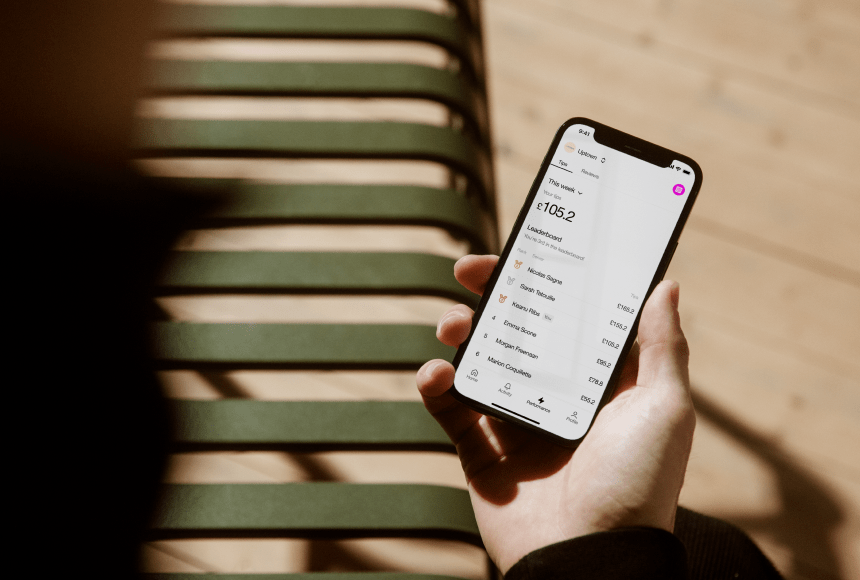
Cutting No-Shows Down to Size: Navigating Pre-Payment in Restaurants
Why Addressing No-Shows Matters
Every restaurant has felt the sting of no-shows. You’ve prepared a table, kept staff on standby, and even turned away other potential customers—only for the reserved party to vanish into thin air. It’s frustrating, and it can chip away at your bottom line. The solution? Implementing pre-payment. By asking customers to pay for (or at least make a deposit on) their meals before setting foot in your dining room, you encourage them to honour their bookings. Sure, the idea can feel bold, but with more UK diners open to digital payments, it might be exactly what your business needs.
According to a report from The Caterer, as many as one in five reservations end up as no-shows in certain areas, especially on peak nights. This can balloon your operational costs, causing wasted food, staff downtime, and missed revenue. Pre-payment flips the script, creating accountability on the customer’s part. In exchange, you deliver a streamlined experience with minimal fuss at bill time. Let’s delve into the benefits—and how to integrate pre-payment into your workflow without upsetting loyal diners.
1. Connecting Pre-Payment to Your Restaurant Style
Before diving in, consider whether your concept makes sense for an upfront charge. High-end tasting menus or special events often rely on pre-payment, or at least a deposit, to secure valuable spots. Meanwhile, casual cafés might prefer a gentler approach—like a small hold on a card during peak weekend brunch slots. The key is to align with your brand and target audience.
- Gourmet tasting menus: Full payment in advance can be standard for premium experiences. Your customers know they’re getting something exclusive, so pre-payment feels natural.
- Popular weekend services: For high-demand hours, a deposit-only scheme might keep your seats filled while ensuring some cushion if people cancel last minute.
- Event nights or special courses: If you host wine-pairing events, holiday dinners, or chef collaborations, pre-payment helps forecast attendance and secure costly ingredients without fear of no-shows.
Adapting your approach to suit your restaurant style lowers the chance of alienating casual customers while still tackling those dreaded no-shows. From the get-go, let your chosen model reflect your unique vibe.
2. Communicating the Logic to Your Customers
Some diners might raise an eyebrow if they’re told to pay in advance, especially if they’re used to old-fashioned reservations. Clear messaging is critical. Show them the benefits: “You’ll enjoy a smoother service,” “We’ll reserve the freshest ingredients just for you,” or “By securing your spot, we can minimise wait times.”
- Website disclaimers: Dedicate a brief section explaining how pre-payment reduces no-shows, ensures top-notch service, and keeps your overheads under control.
- Gentle language: Use phrases like “guarantee your reservation” or “secure your table” to sound inviting, rather than demanding. Emphasise convenience for them, not just security for you.
- Staff training: If a customer calls or asks about it in person, your team should be able to confidently explain the policy. Empower them with short, reassuring talking points that demonstrate understanding.
Openness goes a long way. When customers see you’re being transparent—and that you’re not out to trap them with hidden fees—they’re more likely to embrace the change.
3. Choosing the Right Payment Method
Next, decide how to collect these upfront payments. The good news is that many diners are used to digital transactions—contactless, mobile wallets, or scanning a QR code at the table. Integrating an online or in-app payment system can be surprisingly smooth, especially if you already manage online bookings.
- Simple deposit model: Charge, say, £10 per head, which goes toward the total bill. This approach cushions you against no-shows and feels less intimidating than full pre-payment.
- Full payment for special menus: If you’re hosting a six-course feast, collecting the entire cost upfront ensures serious participants—plus guaranteed revenue on the night.
- Third-party or in-house solution: Some restaurants use third-party booking platforms that include a pre-payment feature. Others set up a custom system on their site. Meanwhile, using a frictionless payment tool like sunday makes it even easier for customers to settle their balance in advance.
Make sure your process is user-friendly. Complex steps or poor mobile design can scare away potential bookings. The fewer clicks it takes to complete payment, the better.
4. Setting Fair Cancellation and Refund Policies
Diners worry: “What if I fall ill?” or “Our train got cancelled—do I lose my money?” You need to plan for genuine crises and last-minute changes. Striking a balance between protecting yourself and accommodating legitimate situations builds trust.
- Partial refunds: Offer 50% back if they cancel at least 24 hours in advance, or 100% if they cancel up to 48 hours prior. This policy can discourage frivolous no-shows yet remain fair for real emergencies.
- Flexible date changes: Instead of losing a deposit altogether, let diners shift their reservation to another day, if they give enough notice. You keep the booking, and they feel understood.
- Transparency upfront: Make sure these terms appear on the booking page. Consider adding them in the confirmation email, too. Surprises at the point of cancellation cause friction that could tarnish your reputation.
Yes, you’re taking payment in advance to reduce no-shows, but a human touch remains vital. When diners see your policy is empathetic, they’re more likely to respect it and remain loyal customers.
5. Integrating Pre-Payment into Your Existing Workflow
Shifting to a pre-paid model might feel like overhauling your entire reservation system, but it doesn’t have to be chaotic. Here’s how to smoothly layer it in:
- Test with specific days or events: Not ready for a full-scale rollout? Start with your busiest Saturday nights or a special tasting menu. Tweak the process based on real feedback from these trial runs.
- Sync with your booking software: If you use a reservation platform, see if it can handle pre-payments or deposits. The best systems automatically add a line to each booking note, so staff see who’s paid in advance.
- Automate confirmations: Once someone pays, send a prompt email or SMS confirming the details. Include a quick link to your cancellation policy or any next steps.
A well-integrated pre-payment flow should require minimal staff intervention. That frees your front of house to focus on the in-person experience—welcoming guests, upselling specials, and providing memorable service.
6. Monitoring Impact and Adjusting as Needed
How will you know if pre-payment actually curbs no-shows and boosts revenue? By tracking metrics. After introducing the policy, keep tabs on the following:
- No-show rate: Are fewer tables going empty compared to before? Even a small drop in no-shows can be a significant win for your finances.
- Booking volume: See if overall reservations hold steady. A sudden dip might mean you need to refine your messaging or deposit size. Too high a deposit might scare away casual diners.
- Average spend: Sometimes, pre-paying encourages diners to add on a bottle of wine or dessert once they arrive, having mentally “absorbed” part of the cost already. Watch for changes in per-head spend.
Analytics will guide whether to lighten or tighten your policy. Maybe you discover that applying pre-payment only to weekend dinners is enough to drastically cut no-shows. Or perhaps you decide to expand it to lunchtime bookings for busy city-centre restaurants. Fine-tuning is key.
7. Building Trust and Reassurance
Asking for pre-payment might raise eyebrows, especially among customers who like spontaneity. Counteract any doubts by emphasising how this system safeguards both sides.
- Social proof: Show real quotes from satisfied diners who appreciate a guaranteed table and smooth exit. “No line at the card machine—loved it!” can go a long way in marketing materials.
- Highlight benefits, not just constraints: Instead of “You must pay or we cancel your booking,” try “Reserve with a simple deposit and enjoy no waiting at the end of your meal. You’re in and out hassle-free!”
- Take a human approach: If something goes wrong—a missed train, a sudden family issue—your staff can handle partial refunds or date changes graciously. Show that you’re not a faceless corporation, but a real team that values diners’ circumstances.
Ultimately, diners are more open to new policies when they feel respected. Combining clarity, empathy, and a dash of convenience can turn pre-payment from an obligation into an appreciated perk.
8. Reducing No-Shows with a Modern Toolset
If you’re transitioning to pre-payment, you’ll likely need a straightforward way to collect and track those funds. Enter technology. When you embed a pay-in-advance option in your online reservation form or ordering page, everything is automatically recorded and cross-referenced with your booking system. If your environment is more casual—like a family diner—maybe you just request a minimal deposit with the booking. For more upscale places, the entire meal might be paid in one go if it’s a set menu.
- Ensure data security: Partner with a trusted provider, because customers will balk if they worry about card fraud. Encryption and PCI compliance are crucial in the UK to protect user data.
- Automate receipts: Email or text them automatically. This 1) gives diners peace of mind, and 2) reduces staff queries about missing confirmations.
- Pair with a streamlined payment solution: Using sunday (which supports quick digital and contactless transactions) can keep everything smooth—both for advanced deposits and final top-ups at the table, if needed.
Embracing new tools might feel daunting, but the payoff in reduced no-shows and simpler administrative tasks can be huge—especially during your busiest nights.
9. Showcasing Pre-Payment in Action
Let’s illustrate how pre-payment can help. Suppose you run a trendy fusion restaurant in London. Friday and Saturday nights are always booked, yet on average, you face three or four no-shows. That’s two or three tables left empty. Now imagine charging a £15 per-head deposit. Over the next month, you notice your no-show rate falls by half. Meanwhile, those who do pay the deposit rarely flake out, boosting your overall revenue and improving staff morale. You also spot fewer last-minute cancellations—when people have already put down money, they’re less inclined to bail. This calm, predictable environment helps your kitchen plan, reduces food waste, and fosters a nicer vibe for the entire team.
Of course, you’ll probably have some initial adjustments—maybe you’ll tweak your deposit level or refine your cancellation policy—but the end result stands: fewer empty chairs, more consistent revenues, and a refined, professional atmosphere. That’s the power of pre-payment done right.
A Future-Ready Approach
No-shows can break a busy restaurant’s spirit: you plan meticulously, only to see your tables remain inexplicably vacant. Pre-payment addresses this age-old problem head-on, while offering modern benefits—like frictionless checkouts and guaranteed table availability. True, it demands careful policy setting and good customer communication, but the upside is clear: more reliable bookings, less wasted food, and a better overall experience for everyone who walks through your doors.
Whether you adopt a deposit-only model or ask for the full amount upfront for special occasions, the key lies in transparency. Show potential guests why paying early benefits them, and they’ll be more willing to adapt. Pair it with a flexible, user-friendly system (like sunday) for maximum impact. By blending technology, empathy, and thoughtful policy, you’ll soon be enjoying more predictable seatings, steadier revenue, and staff who no longer dread those dreaded unoccupied tables. And that, ultimately, is a victory for both you and your diners.
Find out more today
Drop us your details below and we’ll reach out within the next 24
Get paid in advance in a couple of clicks.
Make groups prepay with a simple payment link and cut down on admin work.


